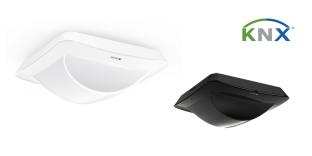Yasmin Hashmi looks at the origins of KNX, its core values and its milestones over the past thirty-five years.
KNX is 35. This worldwide building control standard, initiated by a handful of visionary European manufacturers, now has over 500 manufacturer members, providing more than 8000 different products that can be seamlessly mixed and matched by over 135,000 certified installers. This is no mean feat. Over the past 35 years, various promising home and building control initiatives have come and gone, but KNX has not only survived, it has grown to become ubiquitous in the control of lighting, heating, ventilation, air conditioning, shading, security systems, energy management, and more.
In the first of our #KNXis35 series of articles, we lay the groundwork by looking at KNX’s optimistic beginnings and major achievements so far.
Origins
In 1990, a small number of European electrical manufacturers, including Siemens, Gira, Jung, Merten and Berker, founded the European Installation Bus Association (EIBA) in order to create a unified standard for building automation using bus technology. EIB was the protocol developed from this initiative, and the first EIB devices were certified in 1992.
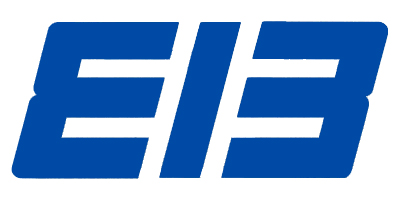
These manufacturers could see that each company having its own proprietary system would fragment the market, whereas by cooperating and creating a common standard, they could provide people with much more choice and better overall solutions, therefore preventing vendor lock-in, and growing the pie bigger for all. This collaborative effort was the beginning of the KNX story.
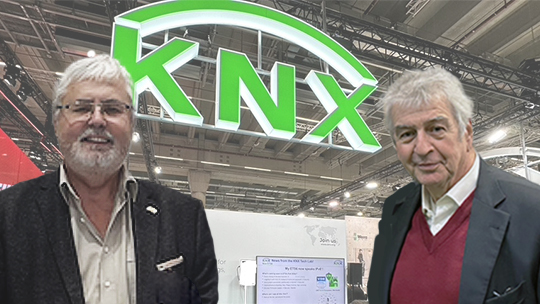
In fact, prior to KNX, there were several competing building control protocols, including EIB, BatiBUS, and EHS (European Home Systems protocol). The organisations behind these protocols merged in May 1999 to form the Konnex Association, which was shortened to KNX Association.
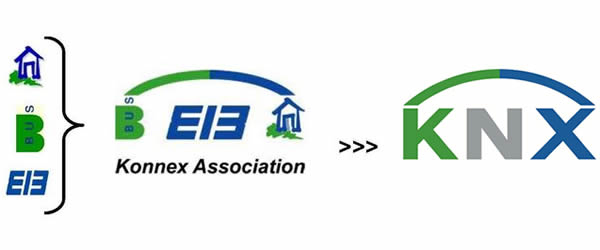
Principles
The merger aimed to create a single, unified standard that combined the strengths of the three existing protocols, according to some forward-thinking principles:
• Interoperability and manufacturer independence – all KNX-certified products are guaranteed to work with each other, and the specification is not controlled by a single company.
• Open standard – KNX is a truly open standard and its specifications are publicly available, fostering widespread adoption, innovation, and long-term stability.
• Decentralised intelligence (distributed system) – KNX does not rely on a central controller but on the intelligence contained within each KNX device connected to the bus. This means that if one device fails, the rest of the system continues to function.
• Backward compatibility – all new KNX products are backwardly compatible with older installations, thus protecting the investment of building owners and allowing for easy upgrades and expansions of existing systems, regardless of their age.
• Flexibility and scalability – KNX is used for a wide range of applications from small residential homes to large commercial complexes such as offices, hotels, airports, hospitals, etc. The system can be easily expanded or reconfigured without major re-wiring, as requirements change.
• Reliability and robustness – Rigorous testing and certification processes for all KNX products ensure high quality and dependable operation. Indeed, there are systems installed decades ago that are still functioning perfectly.
• Energy efficiency – by automating and optimising functions such as lighting, heating, air-conditioning, and energy generation, storage and use, based on occupancy, time of day, temperature, energy tariffs etc, KNX helps to make significant savings in energy and costs.
• Single software tool – the manufacturer-independent engineering software tool (ETS), streamlines the design, configuration, and commissioning of KNX systems, and keeps things simple.
These principles collectively make KNX a future-proof, versatile, and trusted standard in the world of smart homes and buildings, and have contributed towards its global expansion.
Key milestones
The following is a list, by no means exhaustive, of the major achievements of KNX over the past 35 years:
1990 – formation of the EIB Association.
1991 – first edition of the EIB open specification published.
1992 – first EIB-certified product to become available (a bus coupler unit).
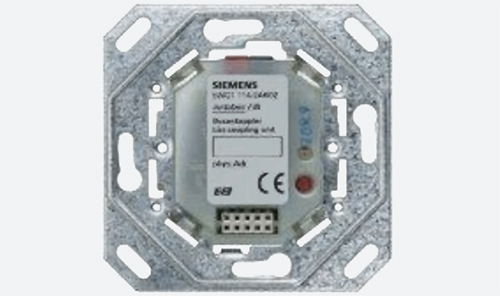
1993 – first version of ETS software for designing, configuring and commissioning EIB systems.
1994 – first EIB training centre and first EIB Journal.
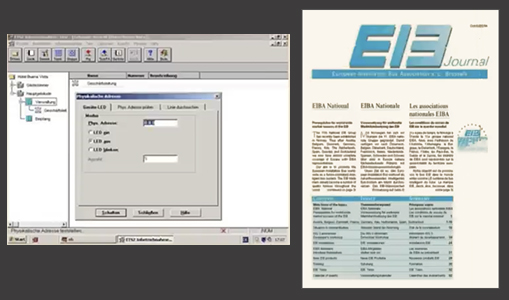
1996 – first EIB-certified Partner, i.e. a person qualified to specify and install EIB systems. This was followed by the launch of the Scientific Partnership initiative to promote cooperation with institutions such universities, technical colleges and research centres.
1997 – convergence process begins between EIB, Batibus, and EHA.
1999 – formation of Konnex Association, later renamed KNX Association.
2001 – publication of the KNX specification, using EIB as the core system, based on twisted pair (TP) cabling as the transmission medium. This year also sees the introduction of radio frequency (RF) as another transmission medium, meaning that wireless communication is now also possible.
2002 – first version of the KNX specification published. This marks a significant milestone, providing a unified technical framework for manufacturers.
2003 – KNX accepted as a European standard for Home and Building Electronic Systems (CENELEC EN 50090).
2004 – ETS3 launched as well as yet another transmission medium in the form of KNX IP.
2006 – KNX achieves a major breakthrough by being approved as an international standard (ISO/IEC 14543-3).
2007 – KNXnet/IP launched, recognising the need to integrate KNX into larger computer-based networks and prepare for the growing importance of IP technology.

2008 – KNX Association makes its debut at the ISE (Integrated Systems Europe) show in Amsterdam.
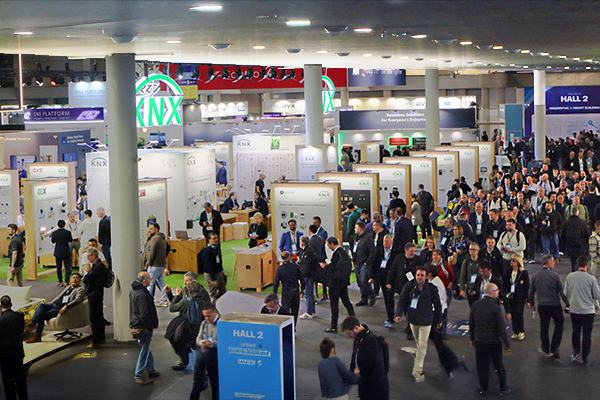
2010 – launch of ETS 4 with improved usability. KNX Association also makes its debut at the Light + Building show in Frankfurt with the ‘KNX City’ as well as other booths. Over 100 KNX Members exhibit. Also this year, the first KNX ‘TOP’ event at the Light + Building show, including the KNX Awards ceremony that recognises outstanding KNX projects in home and building automation.
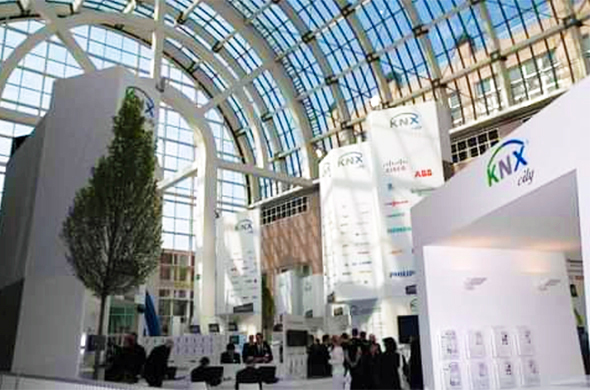

2012 – first certified KNX Training Centre in Australia. This year also sees the launch of ETS Apps for additional and personalised functions,
2013 – KNX officially adopted in China (GB/Z 20965) as a recommended national standard for home and building control. Also, the launch of ETS eCampus for web-based training in KNX basics.
2014 – launch of ETS5 with integration of KNX RF.
2015 – official launch of KNX Secure, including KNX Data Secure and KNX IP Secure.

2019 – KNX IP Secure recognised as an international security standard (EN ISO 22510), cementing KNX’s position as a leader in secure building automation.
2020 – launch of KNXperience online show and awards ceremony in response to the COVID pandemic.
2021 – launch of ETS6.0, a significant release bringing new features and improvements. This year also sees the launch of the KNX Startup Incubator, an initiative to support early-stage companies and foster innovation, particularly in the realm of KNX IoT solutions and AI.
2022 – KNX Standard 3.0 released, heralding the launch of KNX IoT. KNX integrates with emerging smart home technologies such as Amazon Alexa, Google Assistant, and Apple HomeKit, as well as KNX IoT to bridge the gap between traditional KNX installations and the wider IoT ecosystem. This year also sees KNX Secure receive the ‘Information security tested Smart Home and Building’ certification from the VDE (Association for Electrical, Electronic & Information Technologies).
2023 – release of the KNX IoT open-source stack and launch of the first KNX IoT devices. The KNX IoT open-source stack makes it easier and more cost-effective for manufacturers, even those without prior KNX experience, to create IoT-enabled devices.
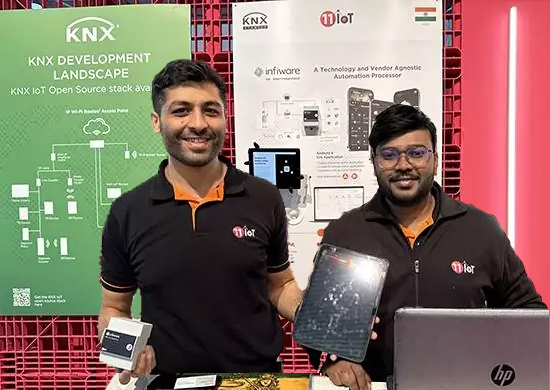
Also in 2023, the first KNX Hackathon takes place, and Frost & Sullivan grants KNX the 2023 Global Technology Innovation Leadership Award.
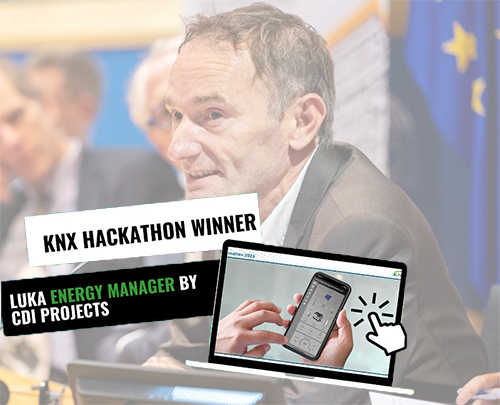
2024 – release of ETS6.3 – a major release that includes 27 new functions including enhanced security, simplified workflows, and support for KNX IoT.
Also in 2024, the launch event of ‘Women in KNX’ takes place at the Light + Building (L+B) show, aimed at supporting women in the industry and increasing their numbers. L+B also sees the first KNX-to-Matter gateways launched, allowing integration of an even wider range of smart technology into KNX installations.
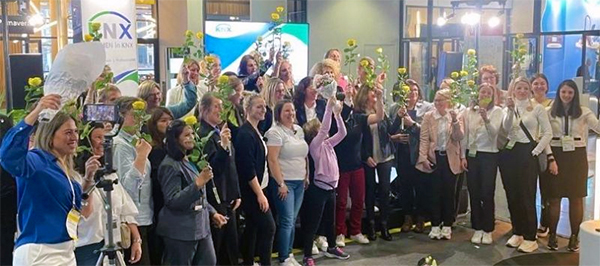
In April 2024, the KNX NextGen programme is launched to train young people and job seekers in the basics of KNX.

In September 2024, the KNX Executive Board appoints Jean-Christophe Krieger as President of KNX Association, taking over from Franz Kammerl who has served in that position for 11 years.
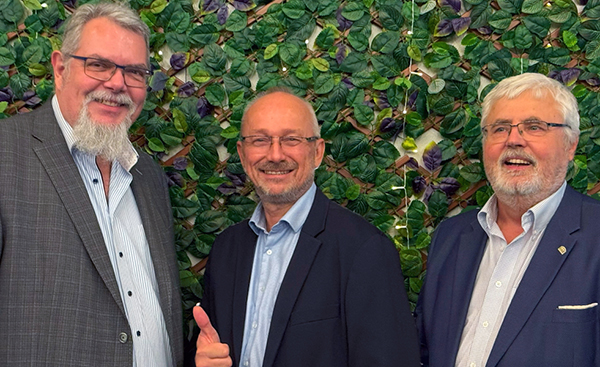
2025 – KNX Association states intention to incorporate AI into future developments to simplify the customer journey and ease the engineering effort of installations.
Growth of the organisation
KNX Association was set up as a non-profit organisation under Belgian law to develop and promote the KNX standard for home and building automation. Its mission is to make KNX recognised as the global standard for smart home and building solutions that are secure, connected, and universally usable. A crucial part of the association’s governance is the General Assembly which is responsible, among other things, for electing the KNX Executive Board’s (KEB) President and Vice president. The KEB itself is responsible for overall strategic direction and management. There is also a Technical Board which oversees the development and improvement of all KNX specifications, and Working Groups that are involved in technical developments.
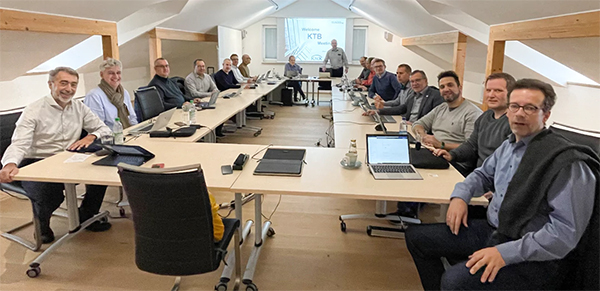
From the outset, KNX has encouraged the formation of National Groups (official representation of KNX in a specific country or region) and Userclubs (providing local networking and support). Thanks to the energy that KNX Association puts into this, and the enthusiasm for the technology worldwide, a growing global community has been fostered, standing today at a massive 45 National Groups and 26 Userclubs.
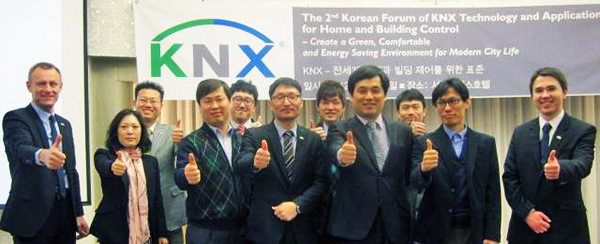
Scientific Groups – typically universities, technical high schools, and research institutes – have also been set up and now number over 180. In addition, there are now 500 KNX Training Centres in 71 countries worldwide, that have certified more than 135,000 people (KNX Partners) so far.
Conclusion
The forward-thinking, long-term ideology of KNX Association, combined with continual technical advancements and the outward-looking approach of its staff, has ensured the impressive adoption and growth of KNX by an enthusiastic global community, whose worldwide installations are a testament to the flexibility, robustness, reliability and longevity of KNX.
In future #KNXis35 articles we will celebrate some of the key aspects of KNX, as well as some of the incredible KNX installations around the world.
Yasmin Hashmi is the Editor of KNXtoday magazine.










